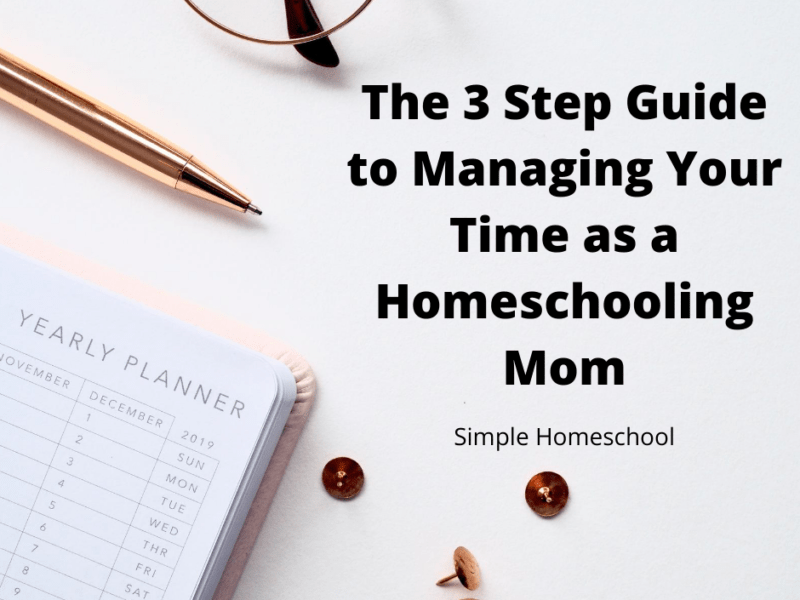The 3 step guide to managing your time as a homeschooling mom ~
Written by Purva Brown of The Classical Unschooler
When I first started homeschooling, my child was too young. I readily admit that now. But I did it for the sole purpose of getting into a routine. I wanted to know that I could do it when we were really ready.
Most of the day, my daughter, then 3 years old, spent a lot of what we called “school time” playing with paper, cutting and scribbling, coloring and singing. The sole purpose of my starting “school” back then was so that I could get on some kind of schedule.
Managing my time well has always been a bit of an obsession with me, but I am well aware that this is not the case with everyone.
So I thought today I would write a three step guide on managing your time as a homeschooling mom:
Step 1: Inventory
Taking inventory of my time is something I have learned from the financial side of managing our household budget. The first step of controlling money is always knowing where it goes.
The same is true of managing time. You have to know where you are currently spending it before you try to assign it to someplace else.
So I would recommend that at least for a week, before you start working on any kind of schedule, you spend some time observing what your family does and writing down how you spend your day.
This might seem silly and even unnecessary, but it is a useful exercise. It establishes your basic routines and the general ebb and flow of your household.
This has come in especially handy for me lately because I work evenings and nights. My husband works during the day.
But we have managed to keep our homeschooling going through this because we both know the basic rhythm of our family. We still stick with it.
Step 2: Work
This is the main reason I don’t like pre-curated curricula. I remember however being very attracted to it in the beginning. All grade-oriented curricula includes a schedule for getting the work done. While this seems like a good idea, the trouble is that it usually follows the general guidelines of a classroom for how much time is spent on the work.
As a homeschooler, this seems like overkill.
We don’t take half as long to finish the required work that we need because a lot of what we do relies not on textbooks but on real, hands-on life skills and discussions.
If we have already covered say, a good discussion of history and politics over dinner the night before, I don’t see any need to have the children read something and answer questions about it on paper just to say we covered it in our homeschool.
So make sure you get an idea of how much work is actually involved in the curriculum you’re considering.
Also find out if you can cover it in less time or a different way. Always change the curriculum to fit your family’s style and rhythm of learning, and never the other way around.
This will ensure that the work gets done is actually enjoyable.
Step 3: Create a Template
Now that you have an idea of all the time you have in a day and everything that needs to get done AND your own method and rhythm of how your family functions, you can start fitting school work into your schedule.
This is my favorite part. I try not to rush to create a schedule immediately however, no matter how inviting writing in a brand new planner is. Instead, I work on a template.
If you asked me the one thing that has helped me the most in my homeschooling, I will point to a template. A template is basically just a rough idea of what will get done for the week.
For example, my middle-schoolers currently work with 30 minutes in each of these subjects: math, vocabulary, and social studies–with another 30 minutes or so of extra practice in whichever area they need it. These are our goals. But I don’t specify the textbook or method in which these goals are accomplished.
Oddly enough, we always get everything done every single day. That is the power of working with a template. The pressure is off and the focus is on the goal, not the tedium or details of the process.
And there you have it. Managing your time as a homeschooling mom doesn’t have to be hard.
Actually, homeschooling is incredibly freeing because you get to set your children’s schedules yourself, and don’t have to be tied down to a school’s way of doing things.
Play around with it, make it fit your family and you might discover the same thing I have.
Enjoy your freedom!
What’s Your Homeschool Mom Personality? Take Jamie’s quiz now and receive a free personality report to help you organize your homeschool based on what your personality type needs most!





 Weekend homeschool links: August 21st
Weekend homeschool links: August 21st